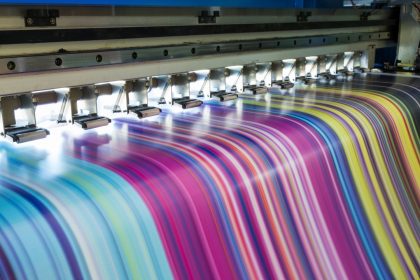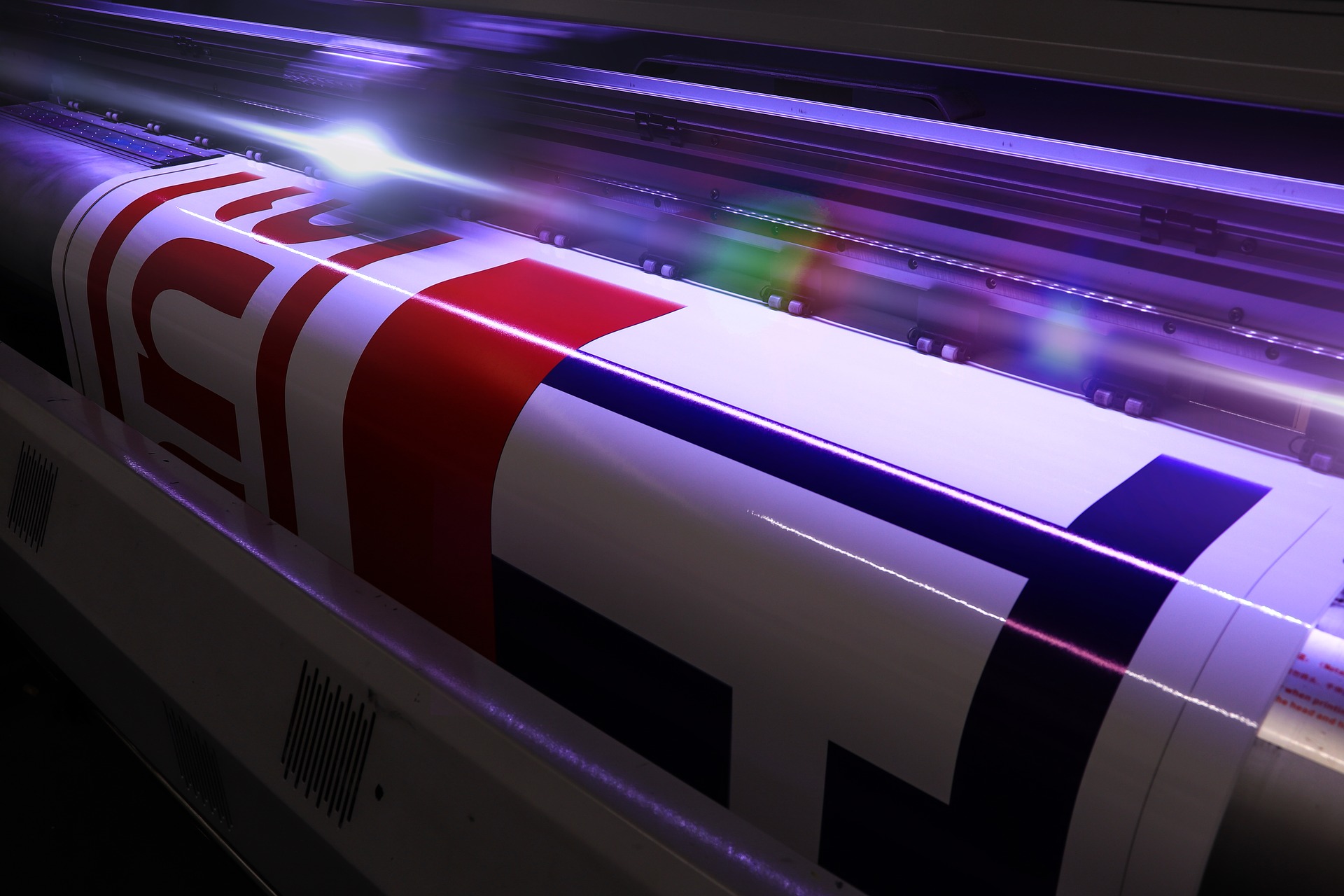

The overall market in the commercial printing industry generated a combined revenue of approximately $84 billion in the United States among approximately 25,000 establishments and 447,000 employees. The industry has also been experiencing consolidation, as the larger printers acquire the smaller printers in the market. Of these revenues, approximately $920 million was from Arizona alone among 390 establishments and 4,950 employees. This results in an average revenue per printer of $2.3M.
The commercial print industry is experiencing a reduction in the use of printed material as more and more information is being distributed via electronic means through the internet and email. Consumers are increasingly favoring digital alternatives, such as online media, over printed materials. There has also been a shift towards shorter print runs with less volume and tighter deadlines. Additionally, there has been an increase in demand for paper finishes or laminates such as soft touch on printed material. As a result, commercial printers have been continuing to invest in new technology and equipment to remain competitive.
The industry can be significantly impacted by changes in such things as paper prices, fuel prices, technology. This industry can present challenges from a financial perspective to its participants. Some of these challenges include: profit management, cash flow management, financing, solvency and uncollectible accounts receivable.
Profit Management
The printing industry is very competitive, which puts pressure on product pricing and can result in low bottom-line profit margins. It is critical that businesses in this industry operate as efficiently as possible. This includes effectively managing capital equipment such as printing, cutting and folding equipment, ensuring that you have the right equipment for the job, that the equipment is utilized 95%+ of the time and that they are well maintained. It also includes utilization of subcontract printers for certain types of print work that requires special equipment. Maintaining good controls over indirect spending is also important. These indirect spending areas include: people, utilities, rent, supplies and insurance. Maintaining highly productive employees is key. Taking the time to hire the right people for the right position is critical. Also, ensuring they are well trained, motivated, have clear expectations and that they are delivering the desired results for the company. Reviewing insurance coverages on a regular basis is also important. Making sure you have the right insurance for your business today and into future and working with your insurance carrier to do everything you can to reduce your risk of loss with solid business processes. Many businesses in this industry have significant rent expense for buildings. Business owners need to ensure they are utilizing their building efficiently, that they do not have excessive unused building space. This will help keep rent expense, property taxes, insurance and utility expenses at a minimum. Use of technology in the printing industry is also very important. Businesses should be evaluating the latest technology that can be used to more efficiently produce its printed materials. This could be items such as: new printers that offer higher quality customized printed material in both large and small format. Printers that allow for 1 to 1 marketing. Enhanced computer technology that enables electronic transfer of information with customers and vendors. It could also include the use of alternative sources of energy, such as solar energy, to lower utility costs.
Cash Flow Management
The printing industry has historically been a very high-volume business with very low gross margin and profit margins. This results in large accounts receivable and account payable balances on an ongoing basis. If customers are slow to pay their invoices (i.e. >30 days), this can quickly present challenges from a cash flow perspective. If a print job does not get completed correctly there can be a claim regarding the printed material, and collection can be delayed. Printers should consider taking deposits from customers upfront to cover hard costs such as paper, ink and printing plates. They should also maintain aggressive accounts receivable collection processes to ensure clients receive invoices quickly, clients acknowledge receipt of outstanding invoices, and payments are received within payments terms. Providing invoices and receiving payments electronically is highly recommended. Maintaining a positive relationship with vendors is also critical, ensuring that vendors are paid according to payment terms is key. Matching payment terms with vendors and customers can really help to maintain positive cash flow.

Financing
The industry has an average beta of 1.75 which indicates that it is more volatile than the overall stock market. Industry participants need to continually upgrade their printing equipment to remain competitive, which drives up capital spending and fixed assets. Many participants are small-businesses that are not well capitalized. When the overall economy slows, many industry participants become unprofitable and find it hard to make their equipment loan payments. All of these characteristics make it challenging for industry participants to obtain low cost working capital and equipment financing. Business owners should work to position their business over time for traditional bank financing by improving business profitability, liquidity, solvency ratios. They should also consider increasing cash reserves. Improving business efficiency, increasing bottom line profit, strengthening the balance and driving growth will make your business more attractive to traditional lenders. It can also put the company in a good position to: weather any downturn in the economy, cyclicality in the market, or impact from changing fuel prices.
Solvency
As previously mentioned, the printing industry is evolving rapidly, technology is changing and this industry is challenged with effectively managing capital equipment. Hold printing equipment too long and it becomes obsolete and inefficient. Buy new equipment too early and it can be difficult to install, run, manage and maintain. It can also be under-utilized. New equipment can also saddle a small printer with a large amount of debt and large debt service payments. This increased debt can have a significant impact on the printer’s solvency ratios such as its Debt-Equity Ratio (long term debt / shareholders equity) and its Interest Coverage Ratios (income from continuing operations + interest expense + income taxes)/interest expense. If these solvency ratios fall below industry averages, the printer can be in default on its loans, making it difficult to maintain its financing or qualify for additional financing. These large debt service payments can also have a large impact on the printer’s working capital, making it difficult for a printer to make its current liability payments on-time. This can damage vendor relationships and make it difficult to do business in the future. Printer could benefit tremendously from a well thought out capital purchase / financial plan. This will help ensure they are buying the right equipment at the right time. It will also help to ensure they have the right financing in place for the equipment and that they understand the impact to their solvency ratios.
Uncollectible Accounts Receivable
The printing industry is also characterized by many small and medium sized customers, from individuals to businesses to government entities. The individuals and small businesses can be underfunded. The medium sized businesses and government entities can take 60 – 90 days to pay for their print work. Printing business owners need to recognize this risk and take measures to limit their exposure in this area. Some things that can be done to reduce this risk include regular credit checks on all customers, establishing tight credit limits on all customers, and aggressive collection efforts on all outstanding balances. They should also consider taking security deposits from some or all customers who are new or have a history of poor performance, especially for the larger print jobs. Once the business owner has extended credit to one of these customers, they have put themselves into a challenging position. Collection and legal actions can be expensive and time consuming and even if you are successful in a getting a judgement, it still has to be collected. If the customer does not have the funds to pay or declares bankruptcy, the business owner is still not going to receive payment.
Conclusion
The commercial printing sector is an exciting and fast paced industry. It is a cyclical industry that is capital intensive and contains many large and small industry participants. It is a high-volume business with relatively tight gross margin and profits margins. The industry can be significantly impacted by changes in such things as fuel prices, tariff and duties and changes in US Gross Domestic Product. This industry can present challenges from a financial perspective to its participants. Some of these challenges include: profit management, cash flow management, financing, solvency, uncollectible accounts receivable. Business owners that are able to effectively manage these challenges can really improve their bottom line!
If you have any questions regarding the financial issues discussed above or any other financial issues, please give us a call at (480) 980-3977.
Note: The information contained in this material represents a general overview of finance and should not be relied upon without an independent, professional analysis of how any of these provisions apply to a specific situation.




